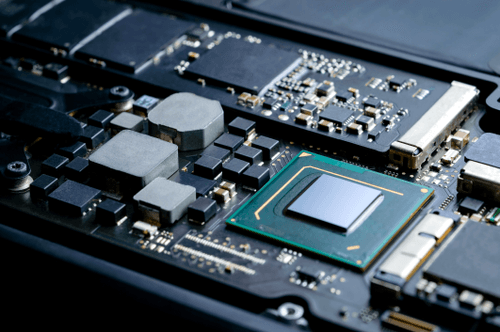The Apple Silicon Revolution: How AI Chips Are Transforming Mobile Performance
Related Articles
- Comparing Apple’s 2024 MacBook Lineup: Which Model Is Right For You?
- Unlocking The Power Of AI: A Deep Dive Into Apple’s New Machine Learning APIs
- Beyond The Keys: Unlocking The Full Potential Of Apple AirTags
- Unlocking The Potential: Syncing Apple Fitness+ With Third-Party Apps
- The Best Apple Watch Bands For Different Activities: From Workouts To Weddings
Introduction
Looking for the latest scoop on The Apple Silicon Revolution: How AI Chips Are Transforming Mobile Performance? We’ve compiled the most useful information for you.
Video about
The Apple Silicon Revolution: How AI Chips Are Transforming Mobile Performance

The world of mobile technology is constantly evolving, with new advancements emerging at a breakneck pace. One of the most significant shifts in recent years has been the rise of artificial intelligence (AI) and its integration into smartphones. This revolution, spearheaded by Apple, has led to the development of specialized AI chips, transforming the way we interact with our devices and pushing the boundaries of mobile performance.
This article dives deep into the impact of Apple’s AI chips, exploring their evolution, the benefits they offer, and how they are shaping the future of mobile computing. We’ll delve into the technical intricacies while maintaining an accessible tone, providing valuable insights for both tech enthusiasts and casual users.
The Genesis of Apple’s AI Chip Revolution
Apple’s journey into the world of AI chips began with the introduction of the Neural Engine in the A11 Bionic chip, powering the iPhone 8 and iPhone X in 2017. This dedicated neural processing unit (NPU) was designed to handle the computationally intensive tasks associated with machine learning, particularly image recognition and natural language processing.
The Neural Engine marked a significant departure from traditional CPU-based processing. By offloading AI tasks to a specialized unit, it allowed for faster and more efficient execution, preserving battery life and enhancing overall performance. This innovative approach laid the foundation for Apple’s future AI chip advancements.
The Evolution of Apple’s AI Chips: A Timeline of Progress
Apple’s commitment to AI chip development has been relentless, with each new generation pushing the boundaries of performance and efficiency. Here’s a chronological overview of the key milestones:
2017: A11 Bionic with Neural Engine
- Introduced the first dedicated Neural Engine in a smartphone.
- Designed for on-device machine learning tasks, including image recognition and natural language processing.
- Enabled faster and more efficient processing, improving battery life and performance.

2018: A12 Bionic with Enhanced Neural Engine
- Boasted a significantly enhanced Neural Engine with eight cores, capable of performing up to 5 trillion operations per second.
- Introduced new AI-powered features, including Face ID and improved photo processing.
- Further optimized for battery life and performance.
2019: A13 Bionic with Next-Generation Neural Engine
- Featured a next-generation Neural Engine with even greater processing power, capable of 1 trillion operations per second.
- Introduced advanced AI features like the "Deep Fusion" image processing technology.
- Enhanced battery life and performance, allowing for smoother multitasking and gaming.
2020: A14 Bionic with Advanced Neural Engine
- Introduced a 16-core Neural Engine, capable of performing 11 trillion operations per second.
- Enhanced AI capabilities for tasks like object detection, scene understanding, and voice recognition.
- Further improved battery life and performance.
2021: M1 Pro and M1 Max with Powerful Neural Engines
- Introduced a new class of AI chips designed for Apple’s Mac computers.
- Boasted significantly more powerful Neural Engines, capable of handling even more complex AI tasks.
- Enabled advanced features like object tracking in video editing software and real-time transcription.
2022: A16 Bionic with Next-Level Neural Engine
- Introduced a new Neural Engine with 17 trillion operations per second, showcasing a continued focus on AI performance.
- Enhanced AI capabilities for features like "Cinematic Mode" in video recording and improved photo processing.
- Further optimized for battery life and performance.
2023: M2 Pro and M2 Max with Enhanced Neural Engines
- Introduced new M2 chips with even more powerful Neural Engines, pushing the boundaries of AI performance on Macs.
- Enabled advanced features like improved object recognition in photos and videos, as well as enhanced machine learning models for tasks like image editing and music composition.
This timeline demonstrates Apple’s unwavering commitment to AI chip development, constantly pushing the boundaries of what’s possible in mobile computing.
The Impact of Apple’s AI Chips on Mobile Performance: A Deep Dive
Apple’s AI chips have profoundly impacted mobile performance in several key areas, enhancing user experience and unlocking new possibilities.
1. Enhanced Image and Video Processing:
- Improved Image Quality: AI chips enable advanced image processing algorithms, such as "Deep Fusion" and "Smart HDR," which capture more detail in shadows and highlights, resulting in stunningly vibrant and realistic photos.
- Real-Time Video Enhancement: AI-powered video processing allows for real-time enhancements, such as noise reduction, stabilization, and dynamic range optimization, resulting in smoother and more captivating videos.
- Cinematic Mode: Apple’s A15 Bionic chip introduced "Cinematic Mode," which utilizes AI to automatically focus on subjects in video recordings, creating a shallow depth-of-field effect similar to professional cameras.
2. Advanced Natural Language Processing:
- Enhanced Voice Recognition: AI chips power more accurate and responsive voice assistants, like Siri, allowing for natural and intuitive interactions with your device.
- Real-Time Translation: AI chips enable real-time translation capabilities, breaking down language barriers and facilitating seamless communication across borders.
- Personalized Language Models: AI chips can be used to train personalized language models, tailoring the user experience to individual preferences and providing more relevant and engaging content.
3. Enhanced Security and Privacy:
- On-Device Machine Learning: AI chips enable on-device machine learning, allowing for sensitive data processing to occur locally, without relying on cloud-based services. This enhances privacy and security by reducing the risk of data breaches.
- Face ID and Secure Enclave: Apple’s AI chips play a crucial role in powering Face ID and the Secure Enclave, ensuring secure authentication and data protection.
4. Improved Battery Life and Performance:
- Efficient Processing: By offloading AI tasks to specialized chips, Apple’s AI chips reduce the workload on the main CPU, optimizing battery life and improving overall performance.
- Optimized Power Management: AI chips are designed for efficiency, dynamically adjusting power consumption based on the demands of the task, further enhancing battery life.
- Faster App Performance: AI chips accelerate app performance, allowing for smoother multitasking, faster app launches, and more responsive user interactions.
The Future of Mobile Computing: AI Chips at the Forefront
Apple’s AI chips are not just a technological marvel; they are a testament to the company’s vision for the future of mobile computing. As AI continues to evolve, these specialized chips will play an increasingly crucial role in shaping the way we interact with our devices.
Here are some potential future applications of AI chips in mobile technology:
- Augmented Reality (AR): AI chips will power more immersive and realistic AR experiences, enabling seamless integration of digital content into the real world.
- Personalized Healthcare: AI chips can analyze health data, providing personalized insights and recommendations to improve health outcomes.
- Smart Home Integration: AI chips will enable smarter and more intuitive control of connected home devices, creating a seamless and personalized living experience.
- Enhanced Gaming: AI chips will power more realistic and immersive gaming experiences, with advanced graphics, realistic physics, and intelligent AI opponents.
Conclusion: A Paradigm Shift in Mobile Performance
Apple’s AI chips have undeniably revolutionized the mobile computing landscape. By introducing specialized hardware designed to handle the demands of AI, Apple has unlocked a new era of performance, efficiency, and user experience. The benefits extend beyond faster processing and improved battery life; they empower developers to create innovative and engaging applications that leverage the power of AI.
As AI continues to evolve, Apple’s AI chips will undoubtedly play a pivotal role in shaping the future of mobile technology. From advanced image and video processing to personalized healthcare and immersive AR experiences, these chips are poised to transform the way we interact with our devices and unlock a world of possibilities.
Source:
- Apple Newsroom: https://www.apple.com/newsroom/
Closure
We hope this article provided you with valuable insights into The Apple Silicon Revolution: How AI Chips Are Transforming Mobile Performance. Stay tuned for more updates and tips!

















